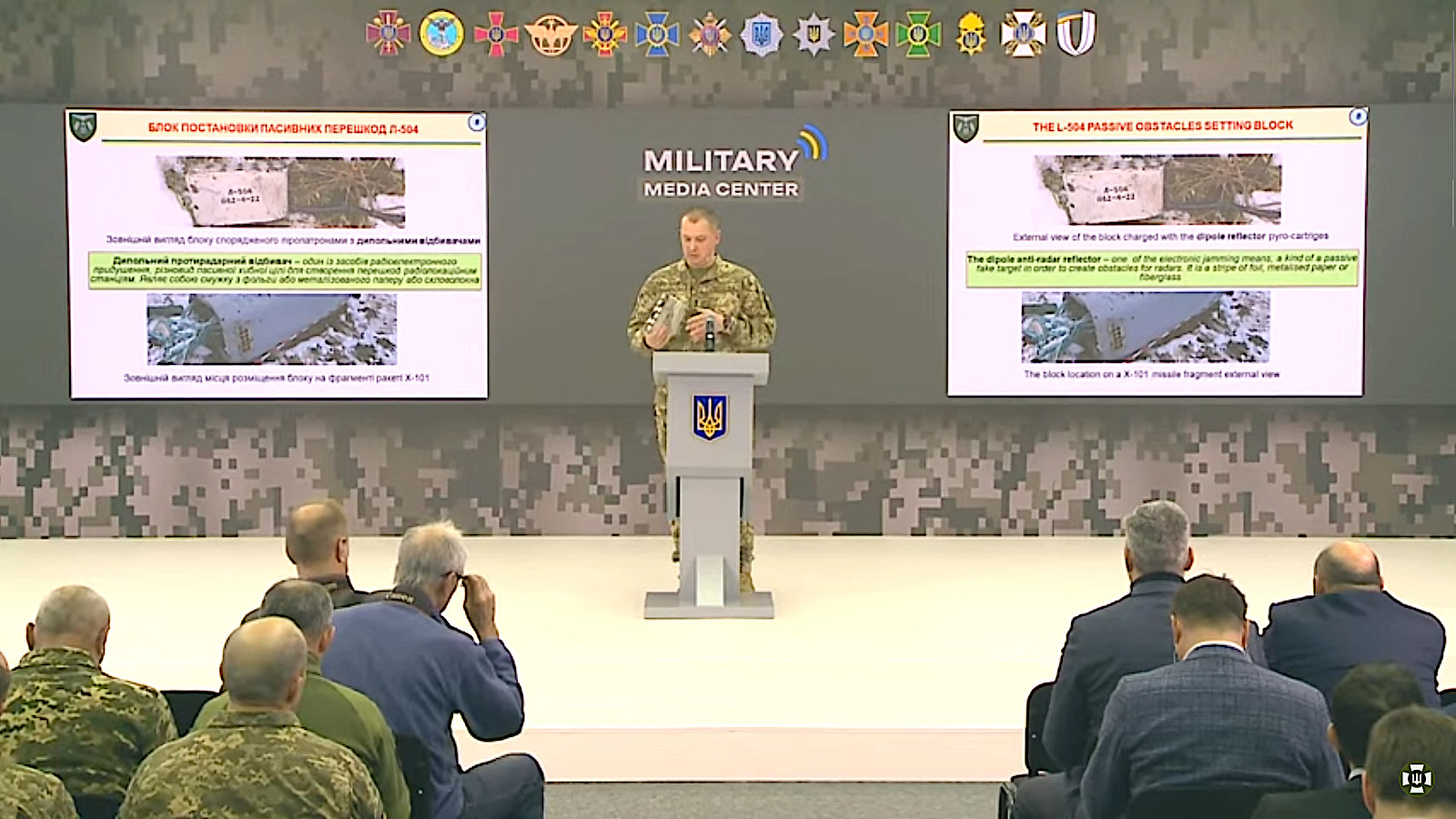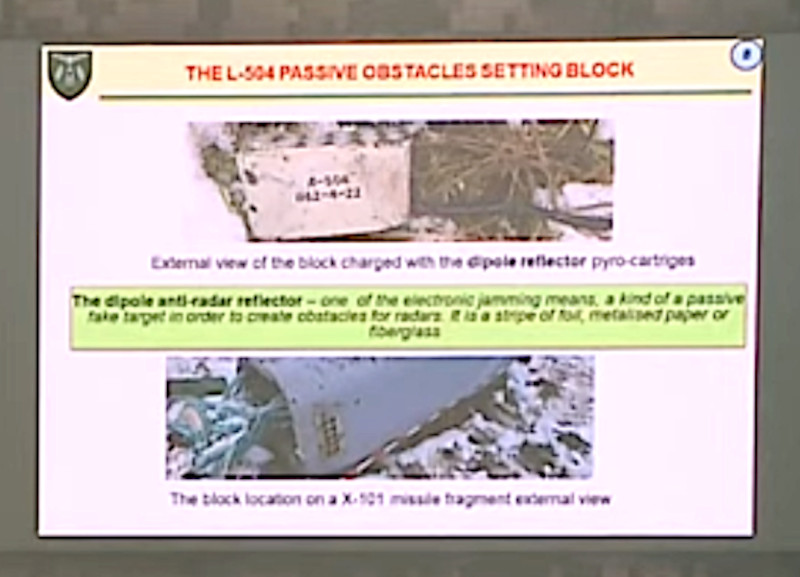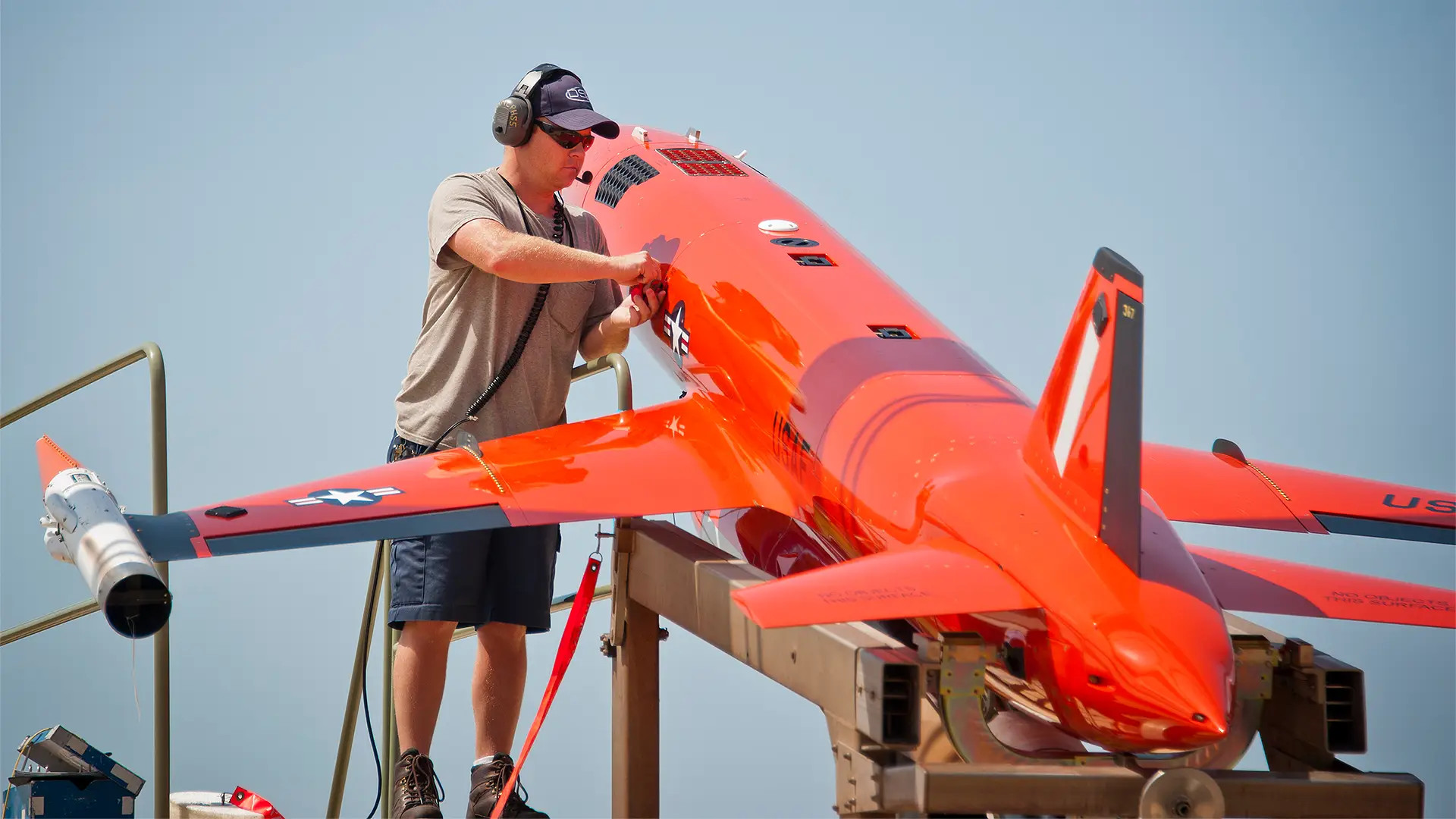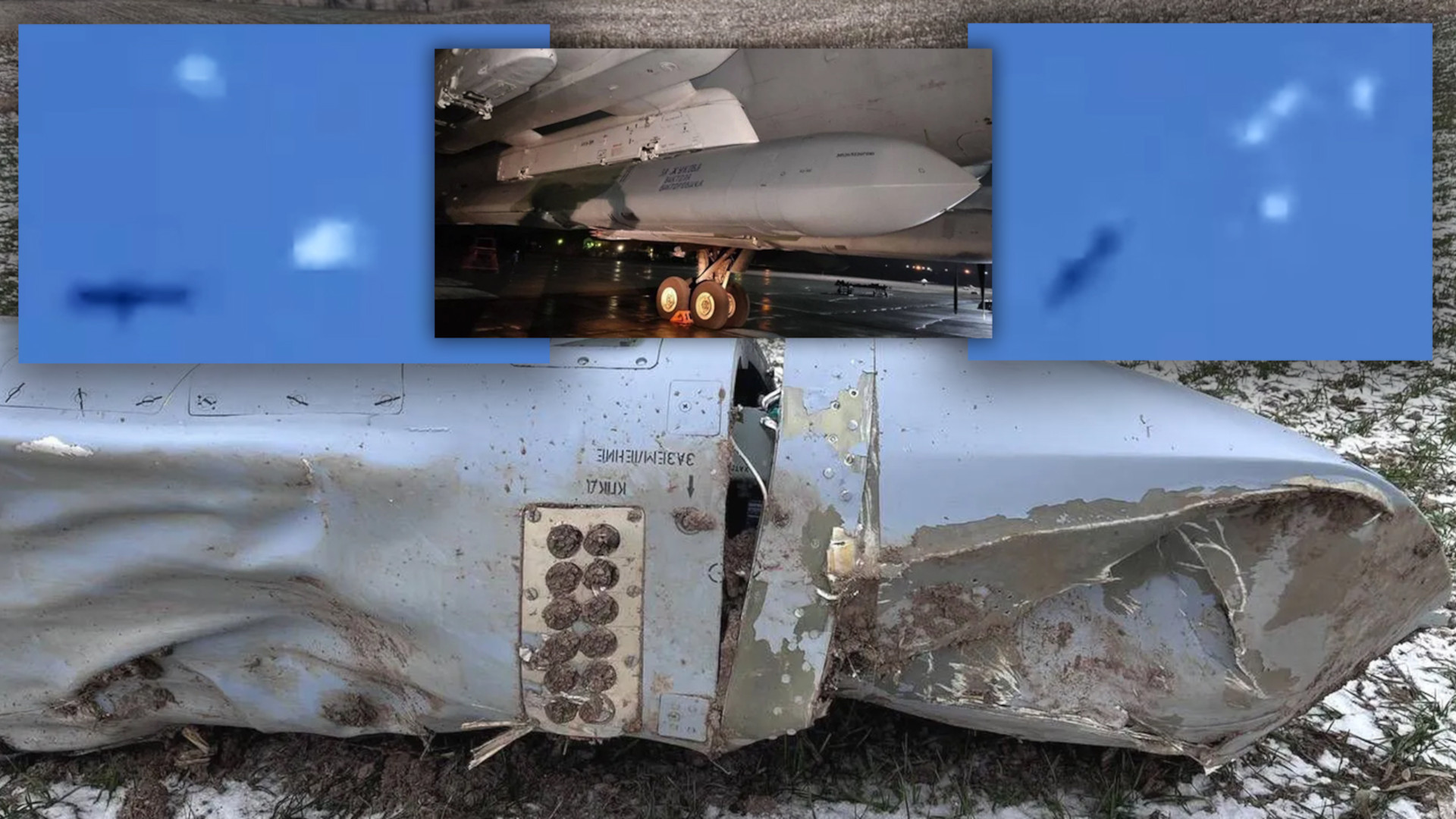We finally have our first look at a Russian Kh-101 air-launched cruise missile releasing decoy flares in flight. Russia’s forces have been employing Kh-101s with this capability in Ukraine on some level since at least January. This is a feature that first emerged publicly after the recovery of a largely intact example of one of these missiles with what was later confirmed to be a countermeasures dispenser system installed. The War Zone had deduced this was likely the case after seeing the images of the downed Kh-101.
Video showing the Kh-101 deploying countermeasures appeared on social media earlier today, but it is unclear where or when it was taken. Its emergence does follow a massive missile and drone barrage on cities across Ukraine today, which included the launch of at least 90 Kh-101, Kh-55, and Kh-555 air-launched cruise missiles, according to Ukrainian authorities. You can read more about Russia’s strikes on Ukraine today here.
The subsonic Kh-101 (as well as its nuclear-armed cousin, the Kh-102) is a substantially revised derivative of the Kh-55/Kh-555 family with some stealthy features and other improvements. You can learn more about these missiles in this previous article.
In the video, the countermeasures can be heard popping off as they are fired. They also notably lack the streams of smoke often seen trailing behind decoy flares. They could be spectral flares where the main heat plume is not visible to the naked eye, or just smaller ones with shorter overall burn times. Radar-confusing chaff, which can be made up of bundles of thin metal strips, metalized paper, or fiberglass threads, could also be included in the mix. However, the deployment of chaff is not generally readily visible from the ground. We will come back to all of this in a moment.
The video below shows an U.S. F/A-18 Hornet fighter deploying both flares and chaff.

Reports that Russia had begun fielding a new countermeasure-equipped Kh-101 subvariant, called the Izdeliye 504AP (Object 504AP), first emerged in late 2022. At that time, it was said that the countermeasures were intended to “jam” enemy surface-to-air missiles, which could point to dispensers loaded with chaff.
After the wreckage of the Kh-101 with the dispenser was recovered in January of this year, the Ukrainian outlet Defense Express put out a report about the countermeasures capabilities, citing anonymous sources. That story said the missile could carry dispensers pre-loaded with either flares (“thermal traps”) or chaff. Defense Express also published pictures of one of the dispenser units, including an x-ray image, which it asserted proved that the cartridges inside were flares.
However, later in February, the Ukrainian military presented what appeared to be the same dispenser unit that Defense Express had published pictures of (or at least the same design with the same markings), as well as other portions recovered Kh-101s, at a press conference. An accompanying briefing slide in English described the countermeasures as “dipole anti-radar reflectors” consisting of “a stripe [sic; strip] of foil, metalised paper, or fiberglass” – in other words, chaff.
The briefing slide shown at the February press conference makes no mention of decoy flares. It does say the cartridges are pyrotechnically launched or otherwise actuated, which would align with the popping sound heard in the video the emerged earlier today.


The video below shows the full press conference Ukrainian officials gave on the recovered Kh-101 in February.

As noted, there is the possibility that the Kh-101 seen in the new video, which is very low quality, is firing a mixture of flares and chaff. It also remains unclear how the launch of the countermeasures is triggered. The missiles are likely to be preprogrammed to fire them when they reach a particular waypoint, such as in the terminal phase closer to the target or where threat systems are thought to be along their route.
Kh-101s with and without countermeasures capabilities (as well as other cruise missiles) could be employed in waves together, with the former helping to pave the way to the target areas.
As The War Zone highlighted back in January, broadly similar countermeasures dispensers capable of deploying flares and chaff have been seen on various types of aerial target drones, such as the American BQM-167 Skeeter. in the past. That has inherently given those uncrewed aircraft a secondary capability to support combat operations by helping to clear the way for aircraft and missiles. Firebee target drones loaded with chaff did exactly this during the opening phases of the U.S.-led invasion of Iraq in 2003, for instance.

Russia has been observed using other kinds of aerial decoy capabilities in Ukraine, as well. This includes the use of denuclearized Kh-55 air-launched cruise missiles with inert metal ‘plugs’ in place of their warheads and balloons with radar reflectors hanging underneath.
It’s also interesting to note that Russia’s use of Iskander-M short-range ballistic missiles earlier in the early phases of its all-out invasion of Ukraine exposed a built-in ‘penetration aid’ decoy capability on those weapons that was not previously known publicly.
That Russia would be interested in giving its cruise missiles additional built-in self-protection capabilities makes good sense, especially in the context of the conflict in Ukraine. Ukrainian forces regularly claim to have significant success in blunting Russian missile and drone strikes. For instance, Ukraine’s Air Force said it was able to shoot down 114 of the 158 missiles and drones Russia’s forces launched at the country today. Though The War Zone cannot independently confirm these losses, the use of the countermeasure-equipped Kh-101 certainly points to concerns about Ukrainian air and missile defense capabilities.
The emergence of this footage of the countermeasure-deploying Kh-101 also comes amid growing evidence that Ukrainian air defenders have altered their tactics in recent months to disrupt Russian tactical air operations. A growing arsenal of Western air and missile defense systems, especially U.S.-supplied Patriot surface-to-air missile systems, look to be key enablers in all of this. Patriots, however, are radar-guided, and would not be thrown off by flares.
Ukraine has also received a growing number of shorter-range air defense systems, including infrared-homing IRIS-T surface-to-air missile systems from Germany, and a British-supplied ad-hoc system that uses heat-seeking AIM-132 Advanced Short Range Air-to-Air Missiles (ASRAAM) as its effector. These systems, as well as German-made radar-cued Gepard self-propelled anti-aircraft guns, have proven very capable against subsonic cruise missiles like the Kh-101, as well as drones.
Most shoulder-fired surface-to-air missile systems, also known as man-portable air defense systems (MANPADS), are also heat-seeking. Ukrainian forces have used MANPADS with some success against cruise missiles, as well as fixed-wing aircraft, helicopters, and drones.
Just today, in response to Russia’s latest missile and drone strikes, U.K. Defense Secretary Grant Shapps said his country was “moving rapidly to” further “bolster Ukraine’s air defenses” in the form of sending “hundreds of British made air defense missiles.”
Altogether, it seems likely that we will only see more examples of countermeasures equipped Kh-101s, as well as other Russian developments to try to ensure its now precious cruise missiles can get to targets, in the future.
Update:
Much clearer footage of the flare release can be seen in this video. It is occurring during the missile’s terminal stage of flight, right before impact, which makes sense.
Contact the author: joe@thedrive.com
